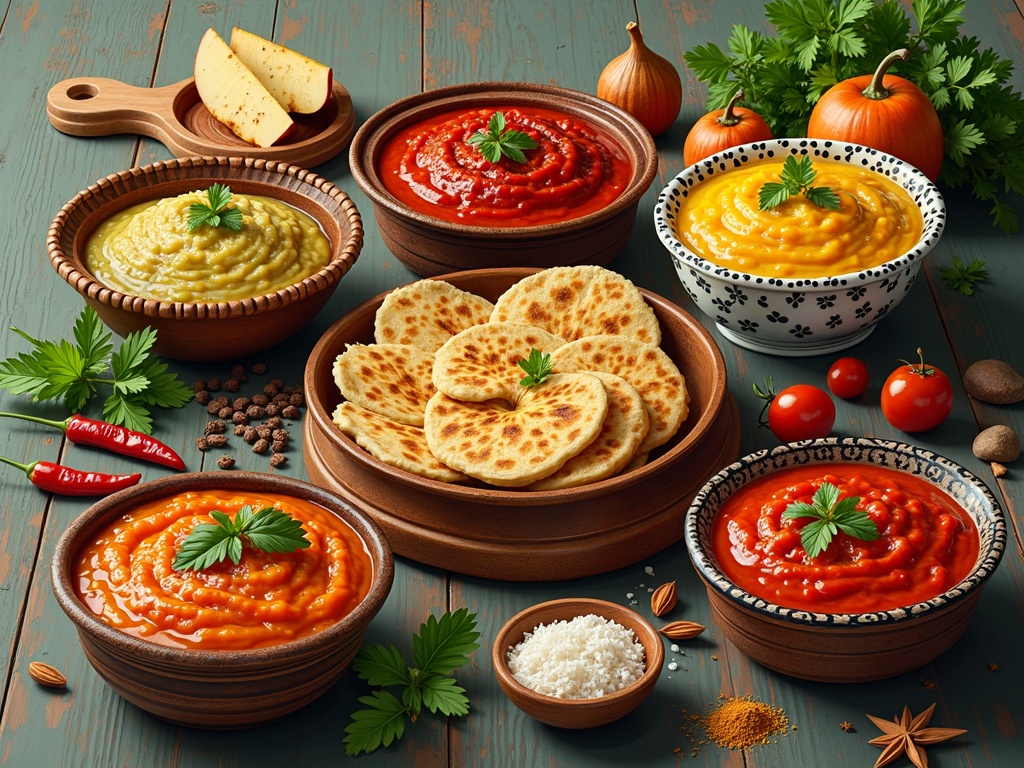Chutney recipe has transformed from traditional Indian condiments into a global culinary sensation, with the market valued at $5.5 billion in 2020 and expected to grow at 5.4% CAGR through 2027. These adaptable condiments add layers and richness to dishes across the world, elevating simple meals with their ideal mix of sweet, sour, spicy, and savory flavors.
Find In This Article
Key Takeaways
- Chutneys fall into two main categories: fresh, vibrant preparations combining herbs, fruits, and spices; and cooked, preserved varieties with complex flavors that develop over time.
- Quality ingredients significantly impact chutney flavor—using fresh, seasonal, and locally sourced produce creates superior results compared to conventional alternatives.
- Traditional preparation methods like using stone grinders (silbatta) release oils gradually for complex flavors, while modern blending offers convenience without sacrificing quality.
- Regional variations showcase cultural diversity, from Karnataka’s creamy coconut chutney to Kanyakumari’s spicy tomato chutney and New England’s apple chutney fusion.
- Homemade chutneys offer significant health advantages, containing fewer calories and no artificial preservatives while providing natural digestive benefits from ingredients like ginger, cumin, and fresh herbs.
Why Chutneys Are Taking Over Global Cuisine
Chutneys have risen from humble beginnings as a staple in Indian households to becoming a global culinary sensation. The numbers speak volumes about this trend—the global chutney market was valued at an impressive $5.5 billion in 2020, with experts projecting a robust growth rate of 5.4% CAGR from 2021-2027. I’ve noticed this explosion of interest firsthand, as these flavorful condiments appear on restaurant menus and grocery store shelves worldwide.
From Traditional Condiment to International Favorite
This traditional Indian condiment has transcended cultural boundaries to find its place in kitchens across continents. What makes chutneys so appealing is their versatility and ability to transform ordinary meals into extraordinary culinary experiences. They add complexity, brightness, and depth to dishes that might otherwise feel incomplete.
Chutneys generally fall into two main categories that serve different purposes in meals:
- Fresh chutneys: These vibrant, uncooked preparations typically combine herbs, fruits, vegetables, and spices. They’re zingy, bright, and often served immediately, like the refreshing coconut chutney that pairs perfectly with dosas and idlis.
- Cooked chutneys: These preserved varieties undergo cooking with sugar, vinegar, or other preservatives. The cooking process creates rich, complex flavors that develop further with time—think mango chutney or tomato chutney that can be stored for months.
The cultural significance of chutneys in Indian dining traditions can’t be overstated. They’re not merely condiments but essential components that balance meals by providing contrasting flavors. In traditional Indian thali (platter) presentations, different chutneys appear alongside main dishes to create a symphony of tastes—sweet, sour, spicy, and savory—all working together in perfect harmony.
What’s fascinating about the global chutney trend is how these condiments have adapted to local tastes while maintaining their essential character. British versions often lean sweeter, incorporating fruits like apples and dates. American adaptations might feature local ingredients like cranberries or peaches. In the Middle East, date and fig chutneys have gained popularity, incorporating regional spices and flavors.
Chefs worldwide have embraced chutneys as secret weapons in their culinary arsenal. They use these flavor-packed condiments to elevate sandwiches, accompany cheese boards, glaze grilled meats, and even inspire unique cocktail creations. The ability of chutneys to bridge cultural divides through flavor has made them valuable tools for fusion cuisine.
Health-conscious consumers have also fueled the chutney boom. Many traditional recipes pack impressive nutritional benefits—from antioxidant-rich herbs and spices to probiotic potential in fermented varieties. The focus on whole food ingredients appeals to those seeking flavorful alternatives to processed condiments.
For home cooks, chutneys offer an accessible entry point into global flavors. With minimal equipment and straightforward techniques, even novice cooks can create impressive results. This approachability has helped drive chutney’s popularity across demographics, from culinary experts to cooking beginners.
The sustained growth of the chutney market reflects more than just a passing food trend—it represents a fundamental shift in global palates toward bolder, more complex flavor profiles. As international cuisine continues to influence everyday cooking, chutneys have secured their place as essential components of the modern global pantry.
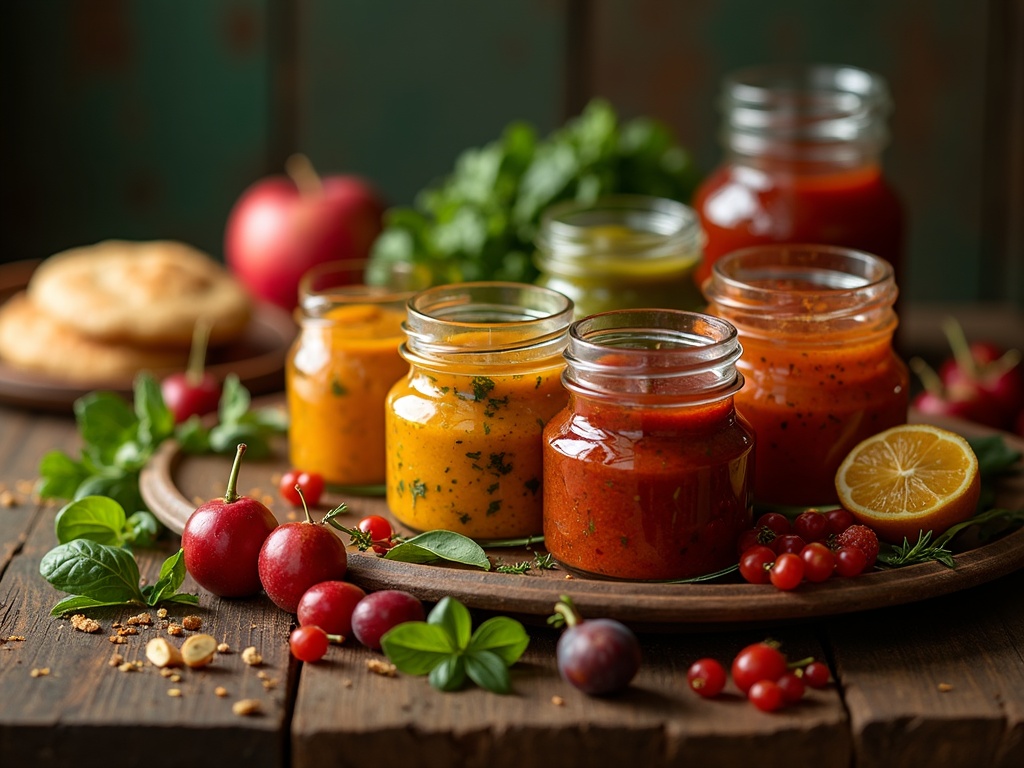
Essential Ingredients for Perfect Chutney
Creating a flavorful chutney depends greatly on the quality and combination of ingredients you select. I’ve found that using fresh, seasonal produce makes a tremendous difference in the final taste profile. The right balance of fruits, vegetables, herbs, and spices creates that perfect harmony of flavors that makes chutney so delicious.
Foundation Ingredients
Fresh fruits form the backbone of many chutneys. Mangoes are exceptionally popular and become about 15% sweeter when in season, giving your chutney that perfect balance of tang and sweetness. I like to use ripe mangoes for sweet chutneys and slightly unripe ones for a more tangy profile. Tamarind adds a distinct sourness that pairs beautifully with spices, while apples provide a subtle sweetness and pleasant texture.
Vegetables add depth and substance to chutneys. Ripe tomatoes contribute acidity and natural umami, making them perfect for savory variations. Onions, whether used raw for sharpness or cooked for sweetness, provide an aromatic base that elevates the other flavors.
Fresh herbs are crucial for bright, vibrant chutneys. A cup of mint leaves adds a cooling effect that pairs wonderfully with spicy elements. Cilantro brings a citrusy, slightly peppery note that’s distinctive in many traditional recipes like coconut chutney, where it complements the rich creaminess perfectly.
Spices are what transform simple ingredients into complex chutneys. Cumin provides earthiness, while coriander adds citrusy notes. For heat, 1-2 green chilies are usually sufficient, but you can adjust based on your preference. Remember that chilies vary in heat, so taste as you go.
Additional ingredients like yogurt (½ cup) add creaminess and help mellow out stronger flavors. A tablespoon of fresh lemon juice brightens the entire mixture and acts as a natural preservative to extend shelf life.
Quality Considerations
The quality of your ingredients directly impacts the flavor of your chutney. I’ve discovered significant differences when using organic produce versus conventional options. Organic fruits and vegetables often have more intense flavors since they’re grown without synthetic pesticides and fertilizers.
Local sourcing is another factor worth considering. Locally grown produce is typically harvested at peak ripeness rather than picked early for long-distance shipping. This translates to superior flavor and nutritional content in your chutney.
Seasonal ingredients simply taste better. A mango chutney made with in-season fruits will have a more pronounced flavor than one made with off-season imports. The same applies to herbs – fresh mint and cilantro from a local farmer’s market or your garden offer vibrant flavors that dried alternatives can’t match.
For the best results, I recommend preparing your ingredients just before making the chutney. Cutting fruits and vegetables releases enzymes that begin changing flavors immediately. The sooner you use them after preparation, the fresher your chutney will taste.
By focusing on these essential ingredients and their quality, you’ll create chutneys with depth and character that complement everything from grilled meats to savory snacks. The beauty of chutney lies in its versatility – once you understand the basic components, you can customize endlessly to suit your tastes and create your signature condiment.
Master These Preparation Methods
The art of chutney-making balances time-honored traditions with modern convenience. I’ve found that mastering a few key techniques makes all the difference between an ordinary condiment and one that elevates every dish it accompanies.
Traditional vs. Modern Techniques
Traditional stone grinder (silbatta) techniques create chutneys with distinctive textures and enhanced flavors. The slow grinding action of stone against stone releases oils from ingredients gradually, producing complex flavor profiles that are hard to achieve with modern equipment.
To use a silbatta effectively:
- Apply gentle, consistent pressure when grinding
- Work in small batches for uniform texture
- Add wet ingredients gradually to form a smooth paste
- Allow time for flavors to develop through the grinding process
Modern blending methods offer convenience without sacrificing too much quality. Electric blenders and food processors can create smooth chutneys in minutes, though I recommend using pulse features rather than continuous blending to maintain some textural integrity.
For cooked chutneys, heavy-bottomed pans distribute heat evenly and prevent scorching. Cast iron or copper vessels particularly enhance flavor development during the simmering process.
Perfect Mango Chutney Recipe
I’ve perfected a mango chutney recipe that strikes the ideal balance between sweet, tangy, and spicy notes. The proportions are crucial: 2 cups of ripe mangoes, 1 cup of sugar, and ¼ cup of vinegar form the foundation.
The magic happens during the 30-minute simmering process. This specific duration allows the mangoes to break down properly while the liquid reduces to the ideal thickness. Stirring occasionally prevents sticking and ensures even cooking.
The spice combination makes this chutney truly exceptional. I use a precise blend of cinnamon, cloves, and ginger (1 tablespoon) that complements the mango’s natural sweetness without overpowering it.
For preparation:
- Peel and dice mangoes into small, uniform cubes
- Combine mangoes, sugar, and vinegar in your heavy-bottomed pan
- Add the spice mixture and stir thoroughly
- Bring to a gentle boil, then reduce to a simmer
- Maintain the simmer for exactly 30 minutes, stirring every 5-7 minutes
- Remove from heat when the mixture coats the back of a spoon
This technique produces a versatile chutney that pairs beautifully with grilled meats, cheese platters, or as part of a sandwich spread. For a cooling accompaniment to spicy dishes, you might want to try a coconut chutney which uses a similar preparation method but creates a completely different flavor profile.
The consistency of your chutney matters tremendously. For mango chutney, aim for a jam-like texture that’s spoonable but not runny. You’ll know it’s ready when it clings to a vertical spoon for a moment before slowly sliding off.
Storage method affects longevity and flavor development. I transfer hot chutney directly to sterilized glass jars, seal tightly, and store in a cool, dark place. This traditional preservation technique allows the flavors to mature over several weeks.
Fresh chutneys without preservatives should be refrigerated and consumed within a week, while properly preserved versions can last months, with their flavor actually improving over the first few weeks.
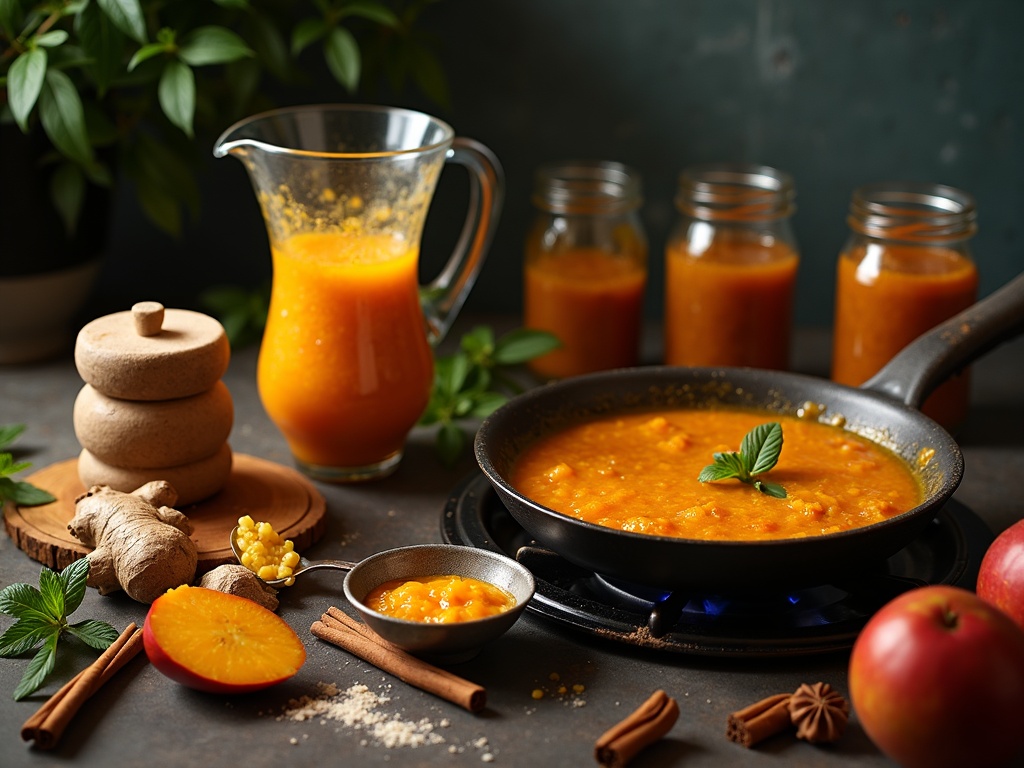
From Classic to Creative Regional Variations
Regional diversity defines the world of chutneys, with each area putting its unique stamp on these flavorful condiments. I’ve explored many variations across different regions and found that understanding these differences can help you appreciate the cultural depth behind each recipe.
Traditional and Regional Specialties
Coconut chutney stands as one of Karnataka’s most beloved contributions to Indian cuisine. This creamy, slightly sweet condiment balances freshly grated coconut with green chilies, ginger, and curry leaves for a perfect blend of flavors. The tempering of mustard seeds and asafoetida adds an extra layer of complexity that makes coconut chutney particularly special.
Moving south to Kanyakumari, the spicy tomato chutney offers a completely different experience. Here, ripe tomatoes are simmered with hot red chilies, tamarind, and a distinctive blend of spices. The resulting chutney delivers a tangy kick that awakens the palate and complements many South Indian breakfast items.
New England has developed its own interpretation with apple chutney, combining local harvest apples with vinegar, brown sugar, and warm spices like cinnamon and cloves. This fusion creation demonstrates how chutney concepts have traveled globally while adapting to local ingredients and tastes.
Perfect Pairings and Cultural Significance
These regional variations aren’t just delicious—they’re deeply connected to cultural practices and traditional meals:
- Coconut chutney pairs perfectly with crispy dosas, creating a classic South Indian breakfast experience
- Spicy tomato chutney enhances soft, steamed idlis by adding a tangy counterpoint
- Apple chutney works beautifully alongside grilled meats or as part of a cheese board
The distinct regional differences in chutney recipes tell a story of cultural adaptation and local preferences. In Karnataka, coconut’s abundance influenced the development of their signature chutney, while Kanyakumari’s tomato version reflects the region’s love for bold, spicy flavors.
What makes these regional variations truly special is how they’ve maintained their authenticity through generations while still evolving with modern tastes. Families often guard their specific chutney recipes as precious heirlooms, with subtle differences marking each household’s unique approach to these condiments.
I’ve found that trying different regional chutneys offers insight into local cultures in a way few other foods can match. Each spoonful connects you to traditions that have developed over centuries of culinary evolution.
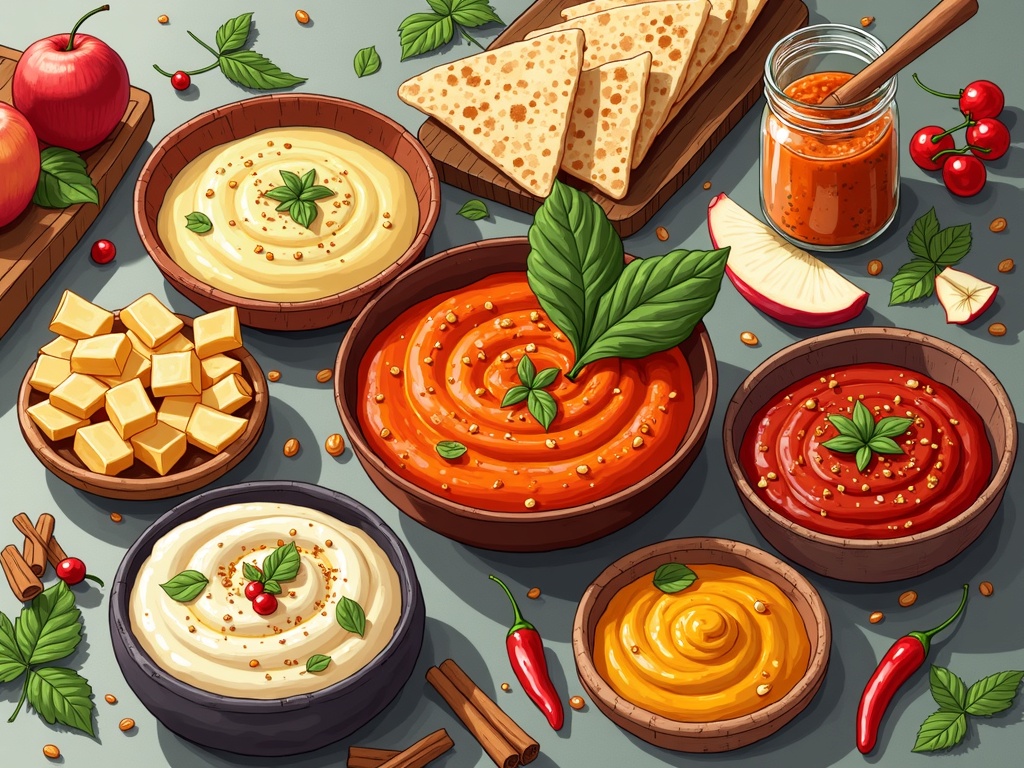
Smart Storage and Preservation
I’ve found that proper storage makes all the difference in maintaining the vibrant flavors of homemade chutneys. Freshly made chutney can be refrigerated for 1-2 weeks when stored in an airtight container. Glass jars work particularly well for this purpose as they don’t absorb flavors or colors like plastic containers might.
Extending Shelf Life Through Canning
For longer preservation, canning is my go-to method that extends chutney shelf life up to one year. The process isn’t as complicated as it might seem:
- Start with sterilizing jars by submerging them in boiling water for 10 minutes
- Ensure lids and bands are clean and ready for sealing
- Use the hot-filling technique by adding freshly cooked, still-hot chutney to sterilized jars
- Leave about 1/4 inch headspace at the top of each jar
- Remove air bubbles by gently tapping jars on a countertop
- Wipe jar rims clean before applying lids
The hot-filling technique is crucial because the heat helps create a vacuum seal as the chutney cools. I’ve learned that skipping this step often leads to spoilage even when everything else is done correctly.
After processing, store your canned chutneys in a cool, dark place like a pantry or cupboard. Direct sunlight and heat can degrade quality and potentially compromise the seal. I label each jar with the preparation date to track freshness.
If you’re making coconut chutney, which tends to be more delicate than fruit varieties, refrigeration is particularly important even after proper canning. Coconut chutney recipes benefit from consistent cold temperatures to maintain their freshness and prevent separation.
Remember that any opened jar should be transferred to the refrigerator immediately and used within a week. Changes in color, smell, or the appearance of mold are clear signs that your chutney should be discarded rather than consumed.
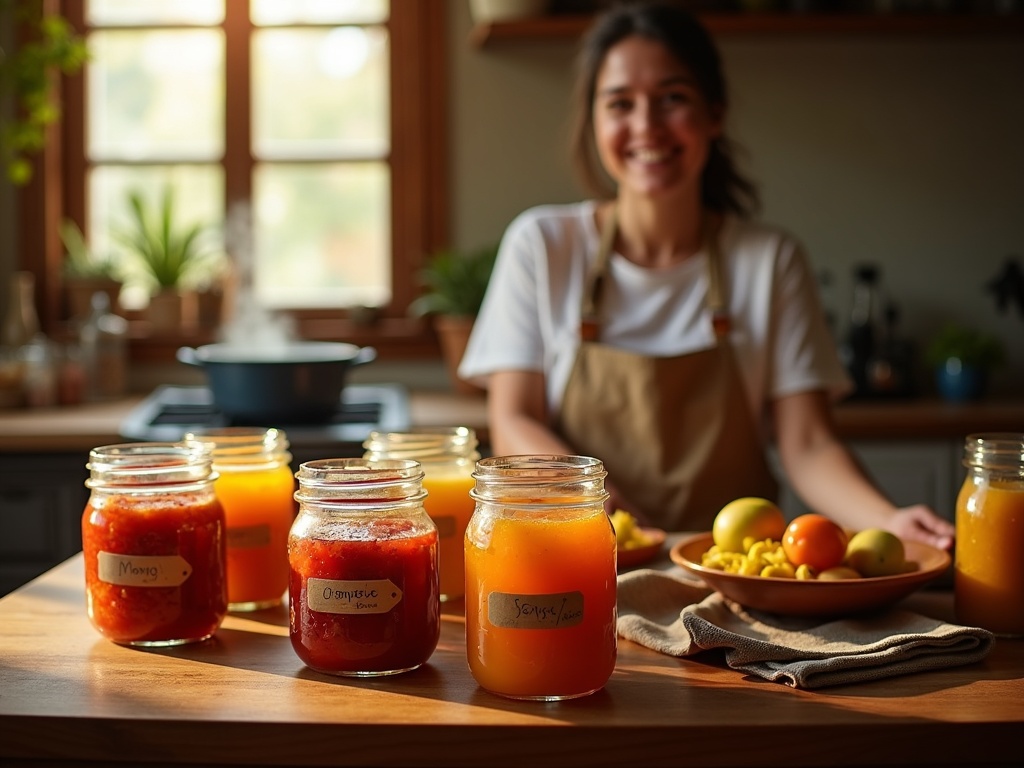
Health Benefits and Nutritional Value
When I make chutney at home, I’m not just creating a tasty condiment—I’m also preparing a healthier alternative to store-bought varieties. Fresh tomato chutney contains approximately 20 calories per serving, making it a light addition to any meal without adding significant caloric content.
Calorie Comparison and Natural Goodness
Homemade mango chutney typically contains around 30 calories per serving, which is substantially lower than commercial versions that can pack up to 100 calories in the same portion size. This dramatic difference comes from the absence of added sugars, thickeners, and other calorie-dense ingredients that manufacturers often include.
The nutritional benefits of homemade chutneys extend beyond just calorie counts. Traditional recipes include:
- Fresh herbs like coriander and mint that provide natural antioxidants
- Garlic and ginger which contain anti-inflammatory compounds
- Lemon juice that adds vitamin C and enhances mineral absorption
- Spices like turmeric and cumin that offer additional health-promoting properties
Digestive Benefits
I’ve found that many chutney ingredients actively support digestive health. For instance, the combination of cilantro, cumin, and ginger in coconut chutney helps stimulate digestive enzymes and soothe the digestive tract. These traditional ingredients have been used for centuries in Ayurvedic practices to aid digestion after meals.
Another significant advantage of making chutney at home is the complete absence of artificial preservatives. Commercial chutneys often contain sodium benzoate, potassium sorbate, and other chemical preservatives to extend shelf life. My homemade versions rely instead on natural preservation methods like acidity from lemon juice or vinegar and antimicrobial properties from spices.
The freshness of ingredients also means higher vitamin and mineral content in homemade chutneys. When fruits and vegetables are processed for commercial products, they often lose some of their nutritional value. By preparing coconut chutney or other varieties from scratch, I retain more of these essential nutrients.
For those monitoring sugar intake, homemade chutneys offer precise control over sweetness levels. I can adjust the amount of natural sweeteners like dates or honey, or even omit them entirely for a tangier profile that still delivers on flavor without unnecessary added sugars.
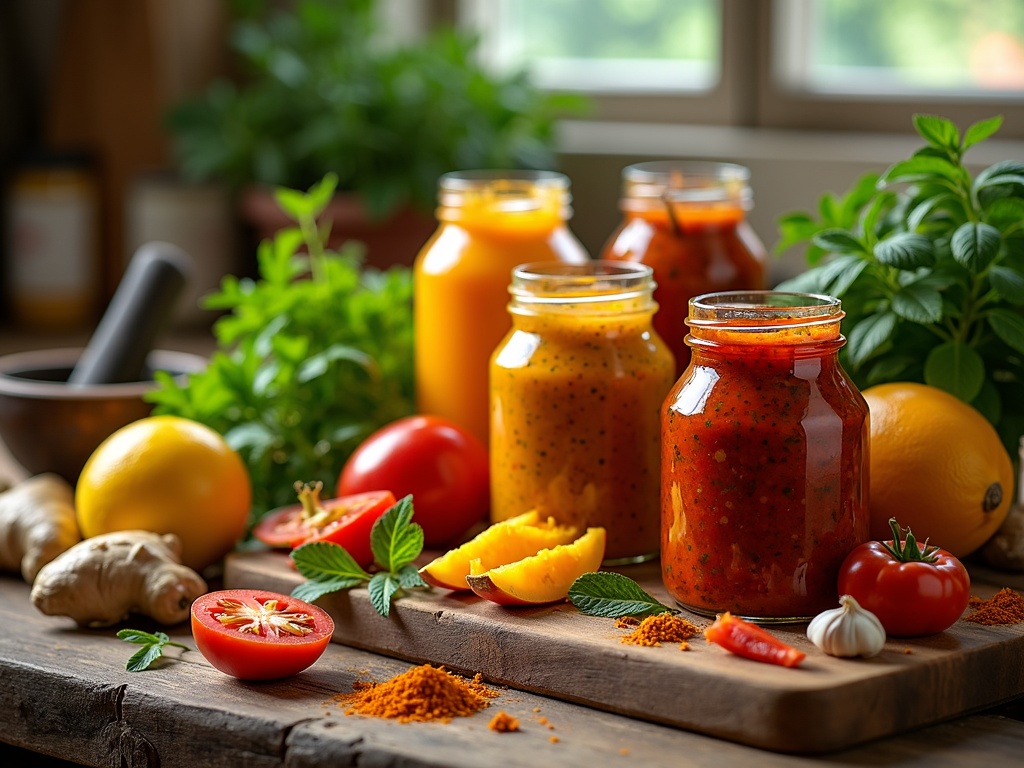
Sources:
Market Research Future, Global Chutney Market Report
Journal of Indian Culinary Tradition, Cultural Significance of Indian Chutneys
Nutritional Science Journal, Health Benefits of Chutneys

